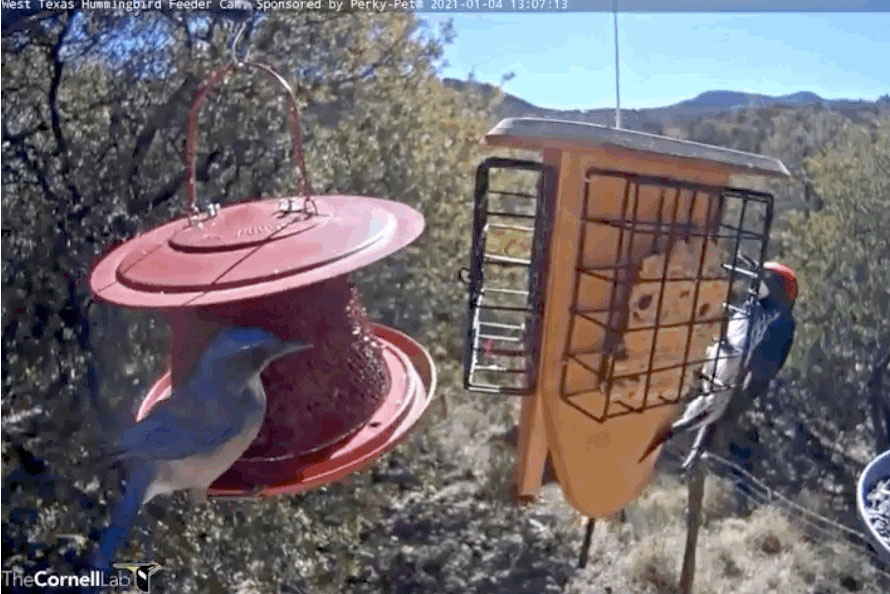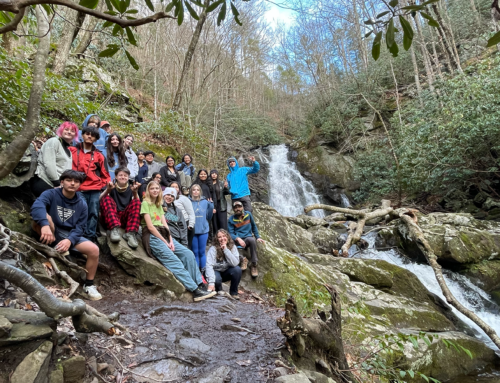Written by Logan Rosenberg, Youth Programs Manager
Every new year, bird nerds like myself tend to ring in the new year with a Big Day. The goal of Big Days is simple: see as many birds as possible in one day. Normally this involves meticulous trip planning and consulting eBird observations, weather reports, Google maps, etc. Big Days are fun challenges that also have the added benefit of feeling like big adventures.
Since the pandemic hit, I have been birding a lot by webcam since long-distance travel is off the table. On New Year’s Day I had the idea—what if I tried a Big Day, but by only looking at birds on livestreaming webcams? How many species could I observe, and what would it be like to bird like this? Here’s what I discovered.
First, my self-imposed rules:
- A bird could only count if I could identify it to species. So I couldn’t watch a view of an ocean, see a gull flying out across the waves and be like, SEAGULL! COUNT IT!
- I could only watch one webcam at a time. Since in real life you can’t bird two places at once, I wanted to keep that same idea here.
- The bird cams had to be live, and I could only watch live (no rewinding back in time to catch a missed bird, etc.)
Here are some of my Big Day final stats:
Takeaway #1: This was really fun!
If your browser does not support HTML5 video, view original GIF.
Above: Two of my favorite North American birds at once! (Acorn Woodpecker and Scrub Jay, seen in North Texas)
One of the thrills of birding is the sense of exploration. You never know what is out there, and you have a chance to see something new every time you go bird watching. Even though I wasn’t going any place physically and I could only look where the camera was pointed, I still was able to get that same sense of exploration and excitement.
Just think, in one day I birded a summer day in Pretoria, South Africa, a rainy day in Panama, and caught tomorrow’s sunrise in Japan (thanks international dateline)!
Takeaway #2: I could see patterns in birds across the globe.
Some things really jumped out to me, one being patterns in bird families and behaviors. You can totally see how birds in the same families are related, even being distributed on different continents. Compare these North American Chickadees with their European relatives.
If your browser does not support HTML5 video, view original GIF.
(Black-capped Chickadees, Ithaca, NY)
If your browser does not support HTML5 video, view original GIF.
(Coal tit, Blue Tit, and European Goldfinch, UK)
Takeaway #3: I got to see new birds that I’ve never even seen in field guides!
This might be because I don’t have a field guide to birds of South Africa, or Japan, but I had a chance to see so many species I’ve never seen before, like these Fisher’s Lovebirds that hung out in the South African afternoon. I love seeing new birds, especially from families that we don’t have in North America. Noticing new plumages, bill structures, and behaviors is fantastic. I can feel my brain expanding with new observations.
If your browser does not support HTML5 video, view original GIF.
(Fisher’s Lovebird, Pretoria, South Africa)
Or getting a chance to find birds that I haven’t seen for years, like when this Orange-Crowned Warbler bombed a hummingbird feeder station.
If your browser does not support HTML5 video, view original GIF.
(Orange-Crowned Warbler visiting hummingbird feeders, California)
Big Day Wrap-Up
All in all, I think this was a fun challenge, and one that I would do again. I know I missed some birds by not tuning in at peak activity times at some of the busiest feeders. I bet if I tried harder, I could break 100+ species in a day. How many could you see on your Big Day?






![A Deep Dive Into Wetlands [Free Lesson Plan]](https://gsmit.org/wp-content/uploads/2024/02/madeline-blog-cover-500x383.png)
